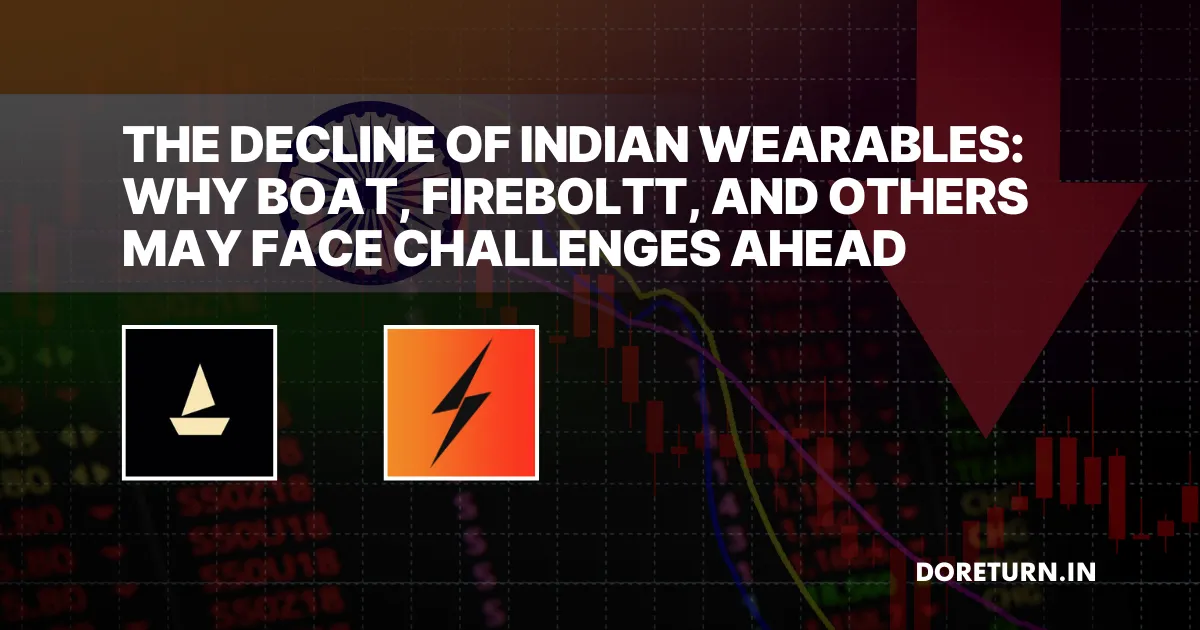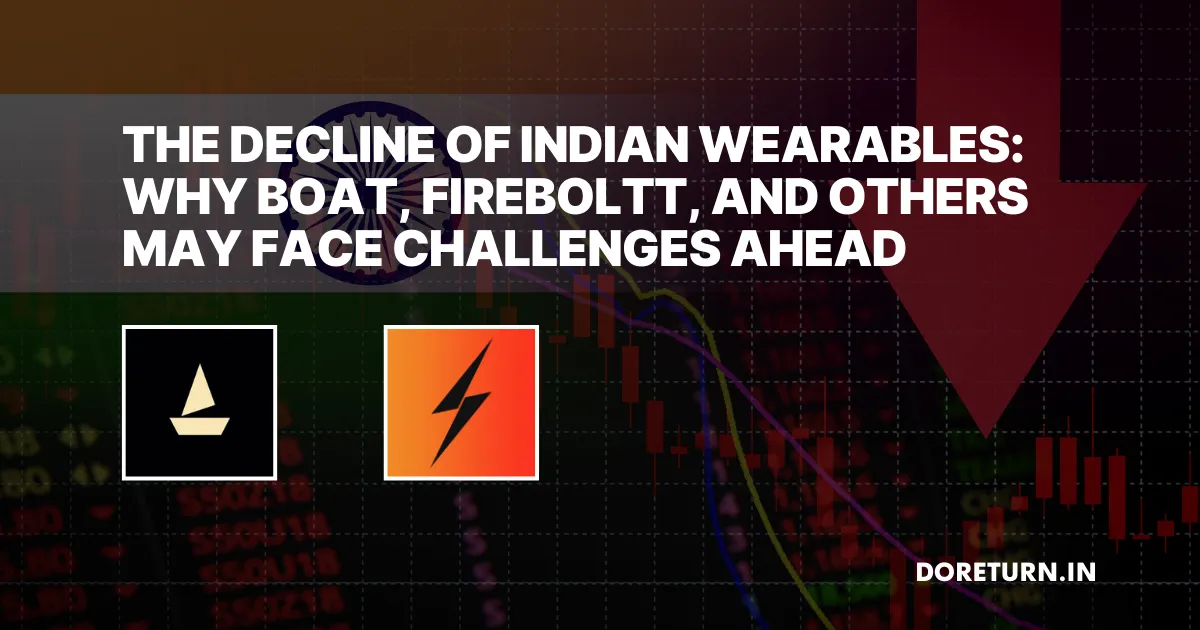The Decline of Indian Wearables: Why boAt, FireBoltt, and Others May Face Challenges Ahead
 Jainil Prajapati
Jainil Prajapati
Introduction

The Indian wearable market has experienced its first decline in years, with a 10% drop in sales. This shift signals potential challenges for major players like boAt and FireBoltt. In this article, we'll explore the current state of the Indian wearables market, the issues facing dominant brands, and what the future may hold for this industry.
The Current State of the Indian Wearables Market
Market Overview
- 10% decline in the wearable market for the first time
- Smart watches and TWS (True Wireless Stereo) categories affected
- Previously hot market cooling down after 4 years of growth
Key Players
- TWS segment: boAt, Noise, Bolt Audio, OPPO (including OnePlus)
- Smart watch segment: FireBoltt, Noise, Boat, Beats XP
Market Saturation
- Approximately 125 smart watch brands in India
- Parallels drawn to the smartphone market circa 2014, with 300+ companies
The Problem with White-Labeling and ODM
Cost and Quality Issues
- Smart watches priced at $6-$10 (₹400-₹900) for manufacturers
- Retail prices inflated to ₹2000-₹2500
- TWS earbuds sourced from Chinese ODMs for $4 (₹350-₹800)
- Repackaged and sold for ₹2000-₹3000
Quality Compromises
- Focus on high volume and high margins
- Compromised quality in pursuit of sales
- Many products fall into the "use and throw" category
Lack of After-Sales Support
- Companies like boAt often don't repair TWS products
- Emphasis on replacement rather than repair
The Consequences of Prioritizing Marketing Over Engineering
Short-Term Gains vs. Long-Term Sustainability
- Heavy focus on marketing and advertising
- Neglect of product development and engineering
- Short-term sales boosts at the expense of long-term market presence
Erosion of Brand Loyalty
- Lack of consistent quality leading to decreased customer loyalty
- Customers likely to switch brands after negative experiences
The Importance of Word-of-Mouth
- Positive user experiences drive organic growth
- Negative experiences can quickly damage brand reputation
The Way Forward for Indian Wearable Brands
Focus on Quality and Innovation
- Invest in engineering and product development
- Prioritize accuracy and reliability over feature bloat
Explore New Technologies
- Consider adopting Wear OS for smart watches
- Investigate emerging categories like smart rings and glasses
Build Brand Trust
- Develop a loyal customer base through consistent quality
- Provide better after-sales support and repair options
Differentiate from the Competition
- Move away from white-labeling and create unique products
- Focus on specific niches or user needs
The Future of Wearables in India
Emerging Categories
- Smart rings (e.g., Ultra Human, Samsung)
- Smart glasses (e.g., Ray-Ban's Meta Glass)
Market Evolution
- Increased consumer awareness and expectations
- Potential for new players to disrupt the market
Survival of the Fittest
- Companies focused on innovation and quality are likely to thrive
- Brands relying on rebranding and poor quality may struggle
Conclusion
The Indian wearable market is at a crossroads. While the recent decline may be concerning for some, it also presents an opportunity for brands to reassess their strategies. Companies that prioritize quality, innovation, and customer satisfaction are more likely to weather this storm and emerge stronger. As the market matures, we can expect to see a consolidation of brands, with those offering true value to consumers rising to the top.
For consumers, this shift may result in better products and more choices in the long run. As always, it's crucial to research and choose wearables that offer the best combination of quality, features, and after-sales support.
Subscribe to my newsletter
Read articles from Jainil Prajapati directly inside your inbox. Subscribe to the newsletter, and don't miss out.
Written by

Jainil Prajapati
Jainil Prajapati
Too much for someone, just enough for those who matter